Gain the knowledge required to design aluminium extrusions by using this list of key characteristics which need to be addressed as you go through the design process.
- Specifying the Metal Thickness
- Uniform Metal Thickness – Where Possible
- Use Metal Dimensions for Tolerances
- Design with surface finish in mind
- Make transitions smooth
- Use Webs
- Use Ribs
- Avoid Sharp Corners
- Incorporate Index Marks
Specify Metal Thickness
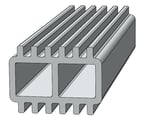
Avoid risking distortion or damage to your profile by keeping sufficient metal thickness around the profile. The thickness you specify will need to be heavy enough to meet your structural requirements.
Shapes tend to encourage distortion whilst going through the extrusion process, especially when the metal thickness is either too thin or not symmetrical.
Avoiding thin details and designing asymmetrical profiles will reduce the risk of your profile failing, becoming distorted or damaged during the extrusion process.
Where Possible, Uniform Metal Thickness
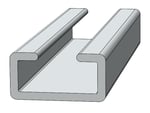
Large differences between wall thicknesses create dimensional control problems during extrusion whereas adjacent wall thickness that have a ratio of less than two-to-one are extruded with ease.
Maintain near possible uniform thickness throughout your shape. If your design combines thick and thin dimensions, ensure the transitions are streamlined with a radius (typically a curve rather than a sharp angle) at places where the thickness changes sharply.
Use Metal Dimensions for Best Tolerances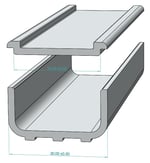
It’s easier to produce tolerances which are the dimensions measured across solid metal than those measured to a centre line or a hole centre. Metal Dimensions can be extruded to close tolerances where as open space dimensions are more difficult to hold the tolerance as they cannot be measured accurately during the extrusion process.
Design with Surface Finish in Mind
When submitting your project to us, it’s important you indicate what surface finishes you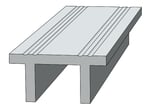 require, you can specify these on your drawing. This is so we can pay extra attention to protect the finish during both extrusion and post extrusion process.
require, you can specify these on your drawing. This is so we can pay extra attention to protect the finish during both extrusion and post extrusion process.
Any changes in metal thickness could possibly show up as marks on the opposite surface of an extrusion, especially on thinner sections, you can minimise marking on exposed surfaces with thoughtful design.
Make Transitions Smooth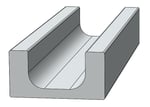
Where there are thick to thin junctions, transitions should be streamlined using a generous radius. By rounding corners, smoother transitions can be achieved.
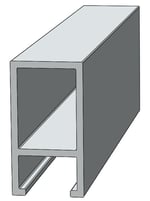
Use Web for Dimensional Control
The hollow part of your profile can be extruded successfully by adding a web to your design where possible. This will allow for for thinner wall sections to be extruded. This method is typically easier to extrude compared to gap and angle dimensions which leave a long hollow.
Reduce Twists with Ribs
After extrusion, wide, thin sections can be harder to straighten. Introducing ribs into your design can help reduce twisting and improve the flatness of the profile.
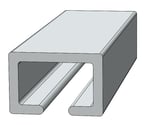
Avoid Sharp Corners to Strengthen Tongue
If your profile has a void in it, try to use rounded corners instead of sharp corners, that way the die tongue is unlikely to snap at the narrowest area of the void. Rounded corners are much stronger and easier to extrude.
Incorporate Index Marks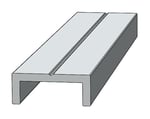
Index marks in your profile make drilling, punching and assembly easier by eliminating the need for centre punching. Index marks also help to identify an inside surface to an outside surface.
Design Checklist
Each project should start with a design checklist, it helps to ensure you cover all bases and when it’s time to speak with us, you will be able to provide all the information we need.
We understand that sometimes it isn’t possible to complete the checklist as projects need faster turnarounds than others or you are unsure what specifications would suit your part and need a little assistance or advice. Whatever stage you’re at, we’re confident we can help
✔ Drawing or print
✔ End use
✔ Alloy and temper
✔ Quality specifications
✔ End-use length/purchase length
✔ Tolerance
✔ Fit and assembly
✔ Surface finish/exposed surfaces
✔ Secondary fabrications
✔ Quantity - this order/annual requirements
✔ Packaging, handling, shipping
✔ Required dates for sample, prototype production, finished product.
Learn more
We have a hub of knowledge in our Aluminium Academy
